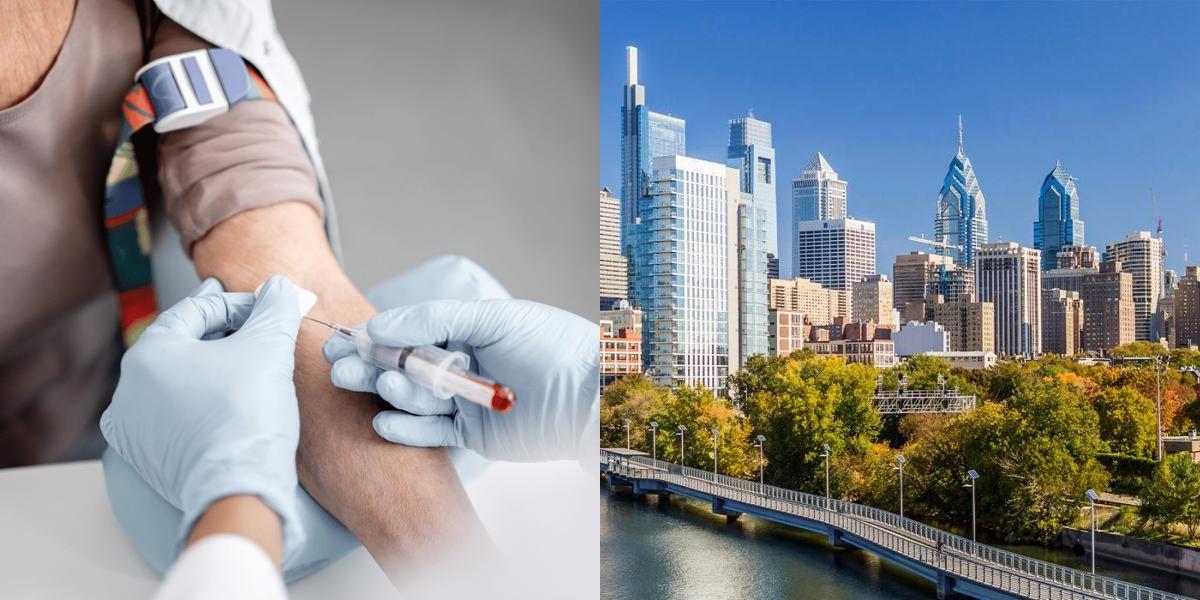How to Become a Phlebotomist in Pennsylvania (2025)

Looking to start a rewarding healthcare career? Becoming a phlebotomist in Pennsylvania is one of the fastest ways to enter the medical field. With short training programs, flexible certification options, and strong job growth, phlebotomy offers a clear path to employment and advancement. According to the U.S. Bureau of Labor Statistics (BLS), phlebotomists in Pennsylvania earn an average of $42,390 per year ($20.38 per hour), with national employment projected to grow 6% from 2024 to 2034.
Key Points
- Phlebotomists are skilled healthcare professionals who specialize in blood collection, specimen handling, and patient care, working closely with doctors, nurses, and laboratory staff.
- Phlebotomists in Pennsylvania must complete an accredited phlebotomy training program (4-6 months), gain clinical experience through internships, and obtain national certification from organizations like NHA or ASCP.
- Phlebotomy training in PA can range from $1,200-$3,000, with many institutions offering flexible payment plans and financial aid options!
- In Pennsylvania, entry-level phlebotomists earn an average of $42,390 annually ($20.38 per hour), with experienced professionals earning up to $52,000+!
How to Get a Job as a Phlebotomist
- Update your resume: Highlight your certification, clinical hours, and relevant skills.
- Network: Connect with instructors, classmates, and healthcare professionals.
- Apply strategically: Hospitals, labs, and donation centers regularly hire new phlebotomists.
- Prepare for interviews: Emphasize attention to detail and patient care.
- Volunteer: If needed, gain experience through unpaid clinical settings.
Career Paths and Opportunities After Becoming a Phlebotomist
Phlebotomy can serve as both a fulfilling long-term career and a stepping stone to other healthcare roles:
- Specialization: Pediatric or donor-center phlebotomy.
- Advanced Credentials: IV therapy or lab technician certifications.
- Medical Laboratory Technician: Requires further education.
- Nursing or Allied Health: Many phlebotomists transition into nursing or medical assisting.
- Healthcare Administration: Move into leadership or management with additional study.
Frequently Asked Questions
Do you need a certification to be a phlebotomist in PA?
No state license is required, but most employers prefer or require certification from NHA, ASCP, or AMT.
What is the quickest way to become a phlebotomist?
Complete a 17-week (200-hour) phlebotomy program and pass a national certification exam.
How much does a phlebotomist make in PA?
The average salary for phlebotomists in Pennsylvania is $42,390 per year or $20.38 per hour, per BLS (May 2024).
What qualifications do you need for phlebotomy?
A high school diploma or GED, completion of an accredited training program, and national certification.
Final Thoughts
Becoming a certified phlebotomist is a rewarding career choice that involves working directly with patients and supporting medical tests. The time it takes to become a phlebotomist is typically a few weeks to months, depending on the training program. With certification, you'll find a strong job outlook for a phlebotomist, with opportunities in hospitals, clinics, and labs. The field also offers room for growth and specialization, making it a promising and fulfilling career path in healthcare.
Looking for a better fit? These other articles could be more in line with your expectations if this one isn't precisely what you had in mind:

Athena is Co-founder and CEO of Dreambound.




